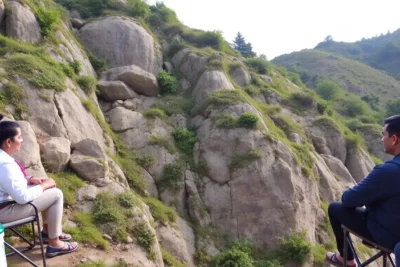
- The Architectural Significance of the Sagrada Familia in Barcelona
- Exploring the Cultural Impact of Sagrada Familia on Barcelona's Identity
- Why the Sagrada Familia Remains a Symbol of Catalan Heritage
- A Journey Through the History of Sagrada Familia: From Vision to Reality
- The Influence of Antoni Gaudí on the Design of Sagrada Familia
- Sagrada Familia: A Testament to Innovation and Artistic Mastery
The Sagrada Familia stands as a testament to the genius of Antoni Gaudí, captivating millions with its intricate design and towering spires. Its location in the heart of Barcelona is not merely coincidental; it reflects the city's rich history and cultural significance.
In exploring The Enigmatic Marvel: Why Is Sagrada Familia Located in the Heart of Barcelona?, one uncovers the layers of meaning embedded in its surroundings, from bustling streets to historic landmarks, all contributing to the monument's allure and relevance in modern times.
The Architectural Significance of the Sagrada Familia in Barcelona
The Sagrada Familia is a monumental expression of Gothic and Art Nouveau architecture, showcasing the innovative vision of Antoni Gaudí. Its design incorporates a wide array of geometric shapes and organic forms, creating a harmonious blend between nature and spirituality. This architectural significance is further highlighted by its unique facades, each telling different biblical stories through intricate sculptures and motifs.
One of the most striking features of the Sagrada Familia is its verticality. The basilica's towers, inspired by natural elements, symbolize the connection between heaven and earth. The structure is designed to mimic the forms of trees, representing a sanctuary of nature within an urban environment. This emphasis on natural forms is a key aspect of Gaudí's work, making the Sagrada Familia not just a building, but a living organism.
Moreover, the Sagrada Familia employs innovative construction techniques that were ahead of its time. Gaudí utilized hyperboloid structures and catenary arches to enhance stability and aesthetic appeal. These methods have influenced contemporary architecture, establishing the basilica as a pivotal reference for future architectural endeavors. The combination of traditional craftsmanship with modern engineering principles sets it apart from other religious edifices.
In terms of its impact on Barcelona's landscape, the Sagrada Familia has become a symbol of the city itself. Its ongoing construction, which began in 1882, resonates with the dynamic spirit of Barcelona, reflecting a city that continually evolves while honoring its historical roots. Visitors not only admire its beauty but also engage with the cultural narrative it encapsulates, making it a vital part of Barcelona’s identity.
Exploring the Cultural Impact of Sagrada Familia on Barcelona's Identity
The Sagrada Familia has become more than just an architectural marvel; it is a cultural icon that embodies the essence of Barcelona. Its intricate designs and unparalleled beauty resonate deeply with both locals and tourists, creating a shared sense of pride. This basilica stands as a testament to the city's commitment to art, innovation, and community, forging a strong identity that intertwines with Barcelona’s narrative.
In addition to its aesthetic appeal, the Sagrada Familia serves as a cultural hub, fostering a variety of events and activities that engage the public. From music concerts to art exhibitions, the basilica provides a platform for cultural expression. This engagement not only enriches the local community but also attracts artists from around the globe, reinforcing Barcelona's status as a vibrant cultural center.
Furthermore, the Sagrada Familia influences local traditions and social dynamics. Many festivals and celebrations take place in its vicinity, making it a key gathering point for the community. The annual celebrations, such as the Feast of the Sagrada Familia, highlight the deep-rooted connections between the monument and the city’s residents, solidifying its role as a cornerstone of Barcelona's identity.
Lastly, the Sagrada Familia's impact extends to the global stage, where it represents Catalan pride and architectural ingenuity. It attracts millions of visitors each year, contributing significantly to Barcelona's economy and reinforcing its image as a must-visit destination. Through its timeless beauty and cultural significance, the Sagrada Familia continues to shape and define what it means to be a part of Barcelona.
Why the Sagrada Familia Remains a Symbol of Catalan Heritage
The Sagrada Familia stands as a profound symbol of Catalan heritage, reflecting the unique identity and cultural pride of the region. As a masterpiece of Antoni Gaudí, its intricate designs and innovative architecture resonate with the spirit of Catalonia, making it a focal point for both locals and visitors alike. The basilica not only showcases extraordinary craftsmanship but also embodies the Catalan people's dedication to art and tradition.
Several factors contribute to the Sagrada Familia's status as a symbol of Catalan heritage:
- Cultural Expression: The basilica incorporates elements of Catalan modernism, showcasing a blend of gothic and natural forms that exemplify the region's artistic evolution.
- Community Significance: It serves as a gathering place for local events and celebrations, reinforcing the bonds between the community and the monument.
- Historical Context: The ongoing construction since 1882 reflects the dedication to preserving cultural heritage while adapting to contemporary needs.
- Global Representation: As a UNESCO World Heritage Site, it represents Catalonia on the world stage, attracting millions and fostering a sense of pride among residents.
Moreover, the Sagrada Familia's architectural uniqueness highlights the ingenuity of Catalan craftsmanship. Gaudí's innovative techniques and visionary designs not only pushed the boundaries of architecture but also inspired generations of artisans and architects. This legacy is a crucial aspect of Catalan identity, showcasing a commitment to creativity and excellence that resonates throughout the region.
In conclusion, the Sagrada Familia stands as a testament to Catalan resilience and cultural richness. Its towering spires and intricate details serve as reminders of the region's history, aspirations, and unwavering dedication to preserving its heritage for future generations. The basilica is more than a monument—it is a living symbol of a proud and dynamic culture that continues to inspire.
A Journey Through the History of Sagrada Familia: From Vision to Reality
The journey of the Sagrada Familia from vision to reality is a remarkable saga that began in 1882, when architect Francisco de Paula del Villar first conceived the project. However, it was Antoni Gaudí who took the helm in 1883, transforming the basilica into a work of unparalleled creativity and ambition. His vision embraced the idea of creating a sanctuary that not only served as a place of worship but also as a cultural landmark that resonated with the soul of Barcelona.
As construction progressed, Gaudí incorporated elements of both Gothic and Art Nouveau styles, resulting in an architectural narrative that reflects the surrounding landscape. The use of natural forms and intricate symbolism allowed the Sagrada Familia to evolve as a living entity, intertwining spirituality with the vibrant energy of the city. This unique approach marked a significant departure from traditional religious architecture, establishing a new paradigm for future structures.
The basilica's ongoing construction has been a testament to the dedication of countless artisans, architects, and laborers who have contributed to its realization. The project has faced numerous challenges, including funding shortages and the impact of historical events such as the Spanish Civil War. Despite these obstacles, the commitment to Gaudí's original vision remains steadfast, as evidenced by the meticulous craftsmanship that continues to shape the Sagrada Familia today.
In essence, the journey of the Sagrada Familia represents not just an architectural feat, but a profound cultural endeavor that encapsulates the spirit of Barcelona. The collaborative effort of generations has transformed Gaudí's ambitious dream into a stunning reality, ensuring that this remarkable monument will stand as a beacon of creativity and faith for years to come.
The Influence of Antoni Gaudí on the Design of Sagrada Familia
Antoni Gaudí's influence on the design of the Sagrada Familia is profound and multifaceted. His visionary approach melds natural forms with architectural innovation, resulting in a structure that transcends conventional religious buildings. Gaudí believed that architecture should be a reflection of nature, which is evident in the basilica's organic shapes and intricate details that symbolize the divine. This philosophy not only distinguishes the Sagrada Familia from other monuments but also establishes it as an extraordinary testament to Gaudí's creativity.
Gaudí's use of color and light within the Sagrada Familia plays a pivotal role in its overall design. By incorporating stained glass windows that filter sunlight into a spectrum of hues, he creates an ethereal atmosphere that enhances the spiritual experience for visitors. This technique not only showcases his artistic talent but also aligns with his belief that architecture should evoke emotion and inspire reflection. Thus, the interplay of light and color becomes an integral part of the basilica's identity.
Moreover, Gaudí's innovative engineering techniques marked a significant departure from traditional construction methods. He utilized catenary arches and hyperboloid structures to create a sense of verticality and stability, allowing for the ambitious height of the towers. These advancements not only showcase his engineering prowess but also allow the basilica to achieve a harmonious balance between aesthetic beauty and structural integrity. Gaudí's commitment to pushing boundaries has left a lasting legacy in architectural design.
Lastly, Gaudí's deep spirituality is woven throughout the Sagrada Familia, influencing its symbolism and overall message. He envisioned the basilica as a "gospel in stone," where each element serves a purpose in conveying religious narratives. From the intricate façades depicting biblical stories to the towering spires representing the heavens, every aspect of the design reflects his profound connection to faith. This spiritual dimension continues to draw visitors from around the world, solidifying the Sagrada Familia's status as a remarkable work of art and devotion.
Sagrada Familia: A Testament to Innovation and Artistic Mastery
The Sagrada Familia is not only an architectural marvel but also a testament to innovation and artistic mastery. Its construction techniques reflect a revolutionary approach that blends traditional craftsmanship with modern engineering principles. As Gaudí envisioned, the structure incorporates a variety of geometric forms and organic shapes, creating a unique harmony between nature and spirituality. This remarkable fusion makes the basilica an extraordinary example of architectural ingenuity.
One of the most notable aspects of the Sagrada Familia is its remarkable use of light and color, achieved through the intricate stained glass windows. These windows filter sunlight, casting vibrant hues throughout the interior, which enhances the spiritual ambiance and creates a connection between the divine and the earthly. This interplay of light serves not only as a visual spectacle but also as a profound reminder of Gaudí's belief in architecture as a means of evoking emotion and reflection.
The Sagrada Familia's design also emphasizes nature-inspired elements, evident in its towering spires and organic motifs. Gaudí sought to mimic the forms of trees and other natural structures, symbolizing a sanctuary within the urban environment of Barcelona. This concept of verticality and organic integration challenges conventional religious architecture, establishing the basilica as a living organism rather than a static monument.
Moreover, the Sagrada Familia's ongoing construction is a testament to the dedication and collaboration of numerous artisans and architects over the years. With a vision that transcends time, the basilica continues to inspire future generations, serving as a pivotal reference point for contemporary architecture. The commitment to Gaudí's original design ensures that the Sagrada Familia will remain a symbol of innovation and artistic mastery for generations to come.
 The Astonishing Completion Date of La Sagrada Familia in Barcelona
The Astonishing Completion Date of La Sagrada Familia in Barcelona Barcelona Weather: Hot Summers, Mild Winters
Barcelona Weather: Hot Summers, Mild Winters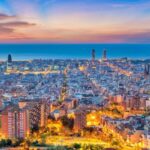 Bunkers del Carmel: Best Views of Barcelona
Bunkers del Carmel: Best Views of Barcelona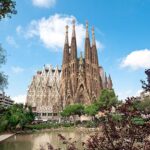 The Imposing Location of Sagrada Familia in Barcelona
The Imposing Location of Sagrada Familia in Barcelona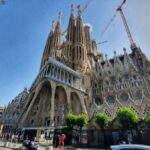 The Fascinating History of Barcelona's Sagrada Familia: A Brief Overview
The Fascinating History of Barcelona's Sagrada Familia: A Brief OverviewIf you want to know other articles similar to The Enigmatic Marvel: Why Is Sagrada Familia Located in the Heart of Barcelona? you can visit the category Blog.
Deja una respuesta

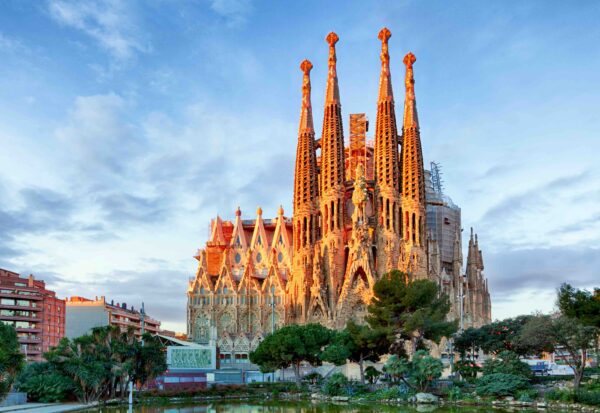
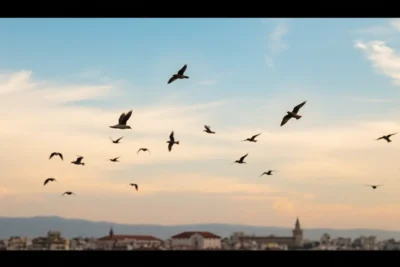



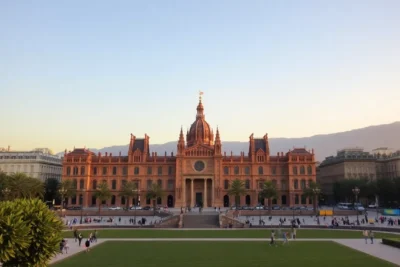

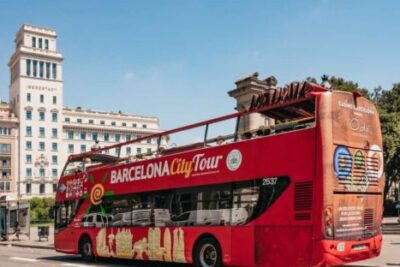
Read more!